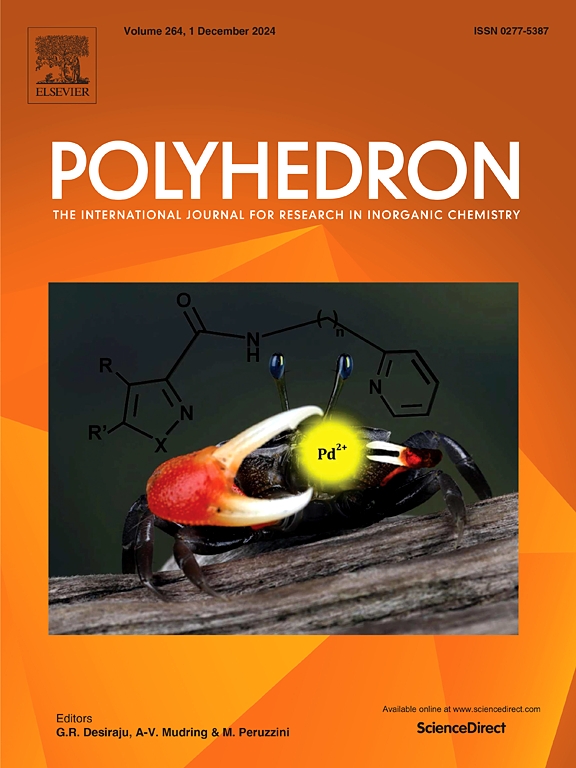The development of composites of cobalt phthalocyanine with graphene oxide nanomaterials as biosensors for the detection of prostate-specific antigen
IF 2.4
3区 化学
Q2 CHEMISTRY, INORGANIC & NUCLEAR
引用次数: 0
Abstract
The work focuses on a development of the biosensor and its use for the detection of prostate specific antigen (PSA). Cobalt tris-(tert-butylphenoxy) mono carboxyphenoxy phthalocyanine (CoPc) was π-π stacked or sequentially added to graphene oxide (GO) and reduced graphene oxide (rGO) and used for the detection of PSA, in the presence of an aptamer and a complementary DNA on a glassy carbon electrode (GCE). Differential pulse voltammetry (DPV) was used for the detection of PSA. The electrode: GCE-GO-CoPc(π-π)-Aptamer performed the best and gave the lowest limit of detection of 0.35 × 10−3 ng/mL and this value decreased in the presence of a complementary DNA (cDNA) to 0.31 × 10−3 ng/mL. The electrodes (using GCE-GO-CoPc(π-π)-Aptamer-cDNA) were found to be selective to PSA in the presence of interfering molecules: BSA (bovine serum albumin), glucose, l-cysteine and was also found to be stable when 50 scans were done.

酞菁钴与氧化石墨烯纳米材料复合材料作为前列腺特异性抗原检测生物传感器的研制
工作重点是生物传感器的发展及其在前列腺特异性抗原(PSA)检测中的应用。将钴三-(叔丁基苯氧基)单羧基苯氧基酞青碱(CoPc) π-π堆叠或顺序添加到氧化石墨烯(GO)和还原氧化石墨烯(rGO)中,并在玻碳电极(GCE)上存在适体和互补DNA,用于PSA检测。采用差分脉冲伏安法(DPV)检测PSA。GCE-GO-CoPc(π-π)-Aptamer电极表现最好,最低检测限为0.35 × 10−3 ng/mL,当存在互补DNA (cDNA)时,该值降至0.31 × 10−3 ng/mL。电极(使用GCE-GO-CoPc(π-π)-Aptamer-cDNA)在干扰分子(牛血清白蛋白)、葡萄糖、l-半胱氨酸)存在的情况下对PSA具有选择性,并且在进行50次扫描时也发现是稳定的。
本文章由计算机程序翻译,如有差异,请以英文原文为准。
求助全文
约1分钟内获得全文
求助全文
来源期刊

Polyhedron
化学-晶体学
CiteScore
4.90
自引率
7.70%
发文量
515
审稿时长
2 months
期刊介绍:
Polyhedron publishes original, fundamental, experimental and theoretical work of the highest quality in all the major areas of inorganic chemistry. This includes synthetic chemistry, coordination chemistry, organometallic chemistry, bioinorganic chemistry, and solid-state and materials chemistry.
Papers should be significant pieces of work, and all new compounds must be appropriately characterized. The inclusion of single-crystal X-ray structural data is strongly encouraged, but papers reporting only the X-ray structure determination of a single compound will usually not be considered. Papers on solid-state or materials chemistry will be expected to have a significant molecular chemistry component (such as the synthesis and characterization of the molecular precursors and/or a systematic study of the use of different precursors or reaction conditions) or demonstrate a cutting-edge application (for example inorganic materials for energy applications). Papers dealing only with stability constants are not considered.
 求助内容:
求助内容: 应助结果提醒方式:
应助结果提醒方式:


